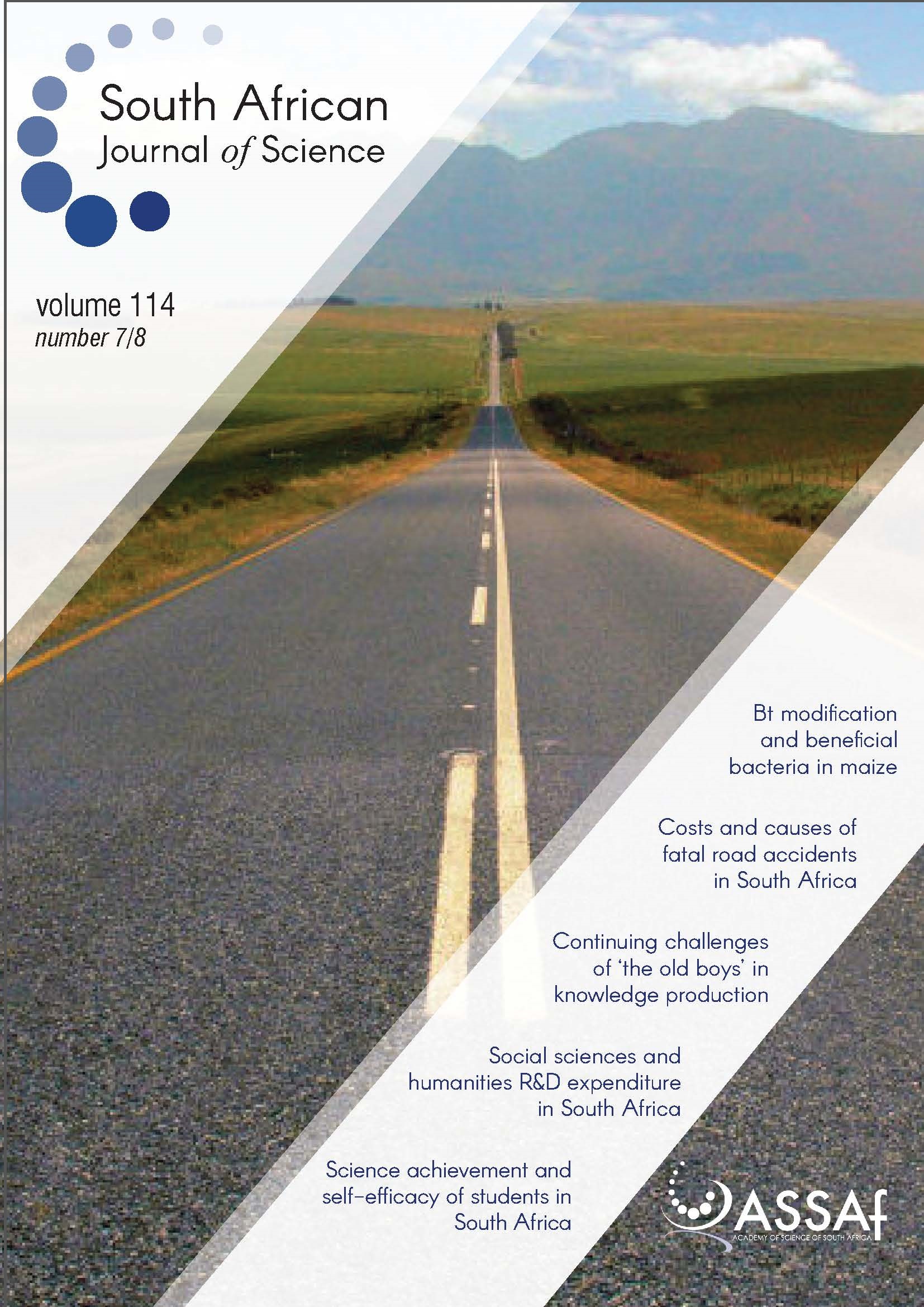Nurses’ knowledge of and willingness to promote female condom use in Johannesburg Health District
DOI:
https://doi.org/10.17159/sajs.2018/20170174Keywords:
health professional, prevention, women, cognition, complianceAbstract
The female condom is the only current method for female partners to simultaneously prevent both pregnancy and sexually transmitted infections. Studies of various contraceptive methods suggest that providers’ acceptance and endorsement may be a key factor in their clients’ uptake and continued use of a method. Our aim in this study was to assess the relationship between nurses’ knowledge of and their willingness to promote female condom use in 18 public healthcare facilities within the Johannesburg District. The mean score of correct answers of 398 nurses completing an anonymous, self-administered, six-item questionnaire was 4 out of a maximum of 6. Data analysis included the use of descriptive statistics and a chi-square test. It was found that 79% of participants were knowledgeable but only 59% were willing to promote female condom use. There was no association between knowledge of and willingness to promote female condom use. The following significant associations with knowledge and willingness to promote female condom use were found: family planning experience, being employed by a local government authority, working in a primary care clinic and having had informal training on female condom use. Informal training of nurses within the family planning unit in the clinics has the potential to improve nurses’ knowledge and willingness to promote female condom use.
Significance:
- This is the first study conducted in South Africa on the knowledge of and willingness of healthcare providers to promote female condom use.
- An effective strategy is needed to motivate healthcare workers to promote female condom use with their patients.
- Informal training of nurses within the family planning unit has the potential to improve nurses’ knowledge of and willingness to promote female condom use.
Published
Issue
Section
License

All articles are published under a Creative Commons Attribution 4.0 International Licence
Copyright is retained by the authors. Readers are welcome to reproduce, share and adapt the content without permission provided the source is attributed.
Disclaimer: The publisher and editors accept no responsibility for statements made by the authors
How to Cite
- Abstract 815
- PDF 1119
- XML 309
- EPUB 272












.png)